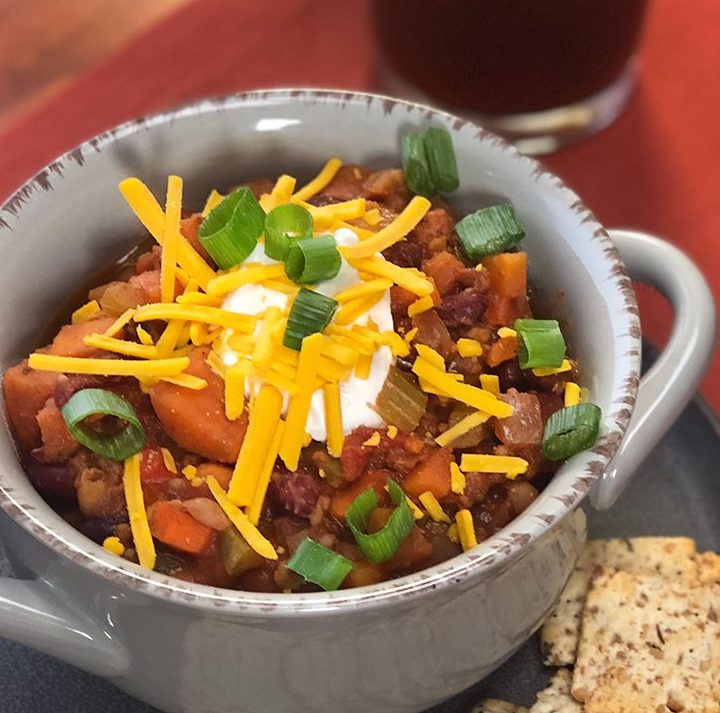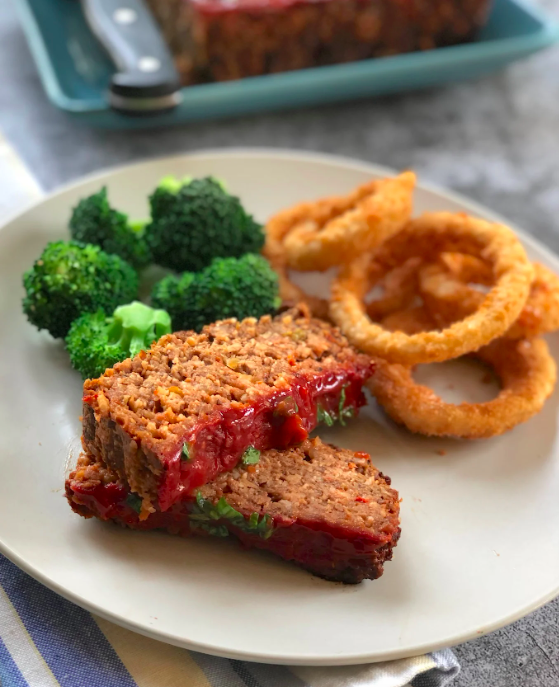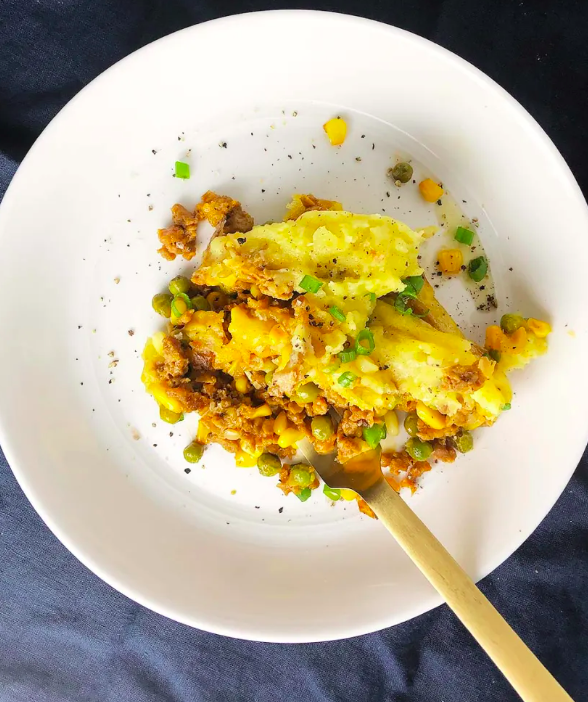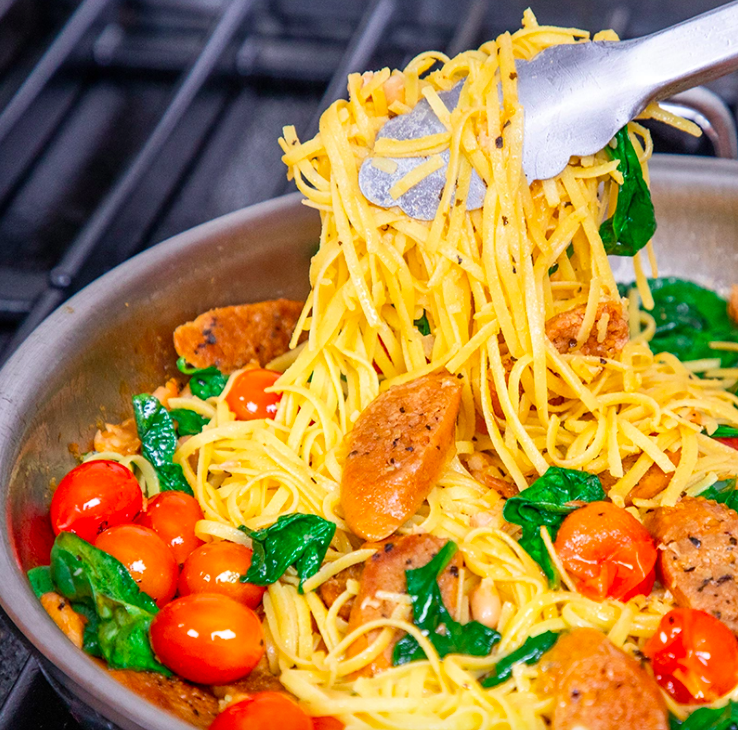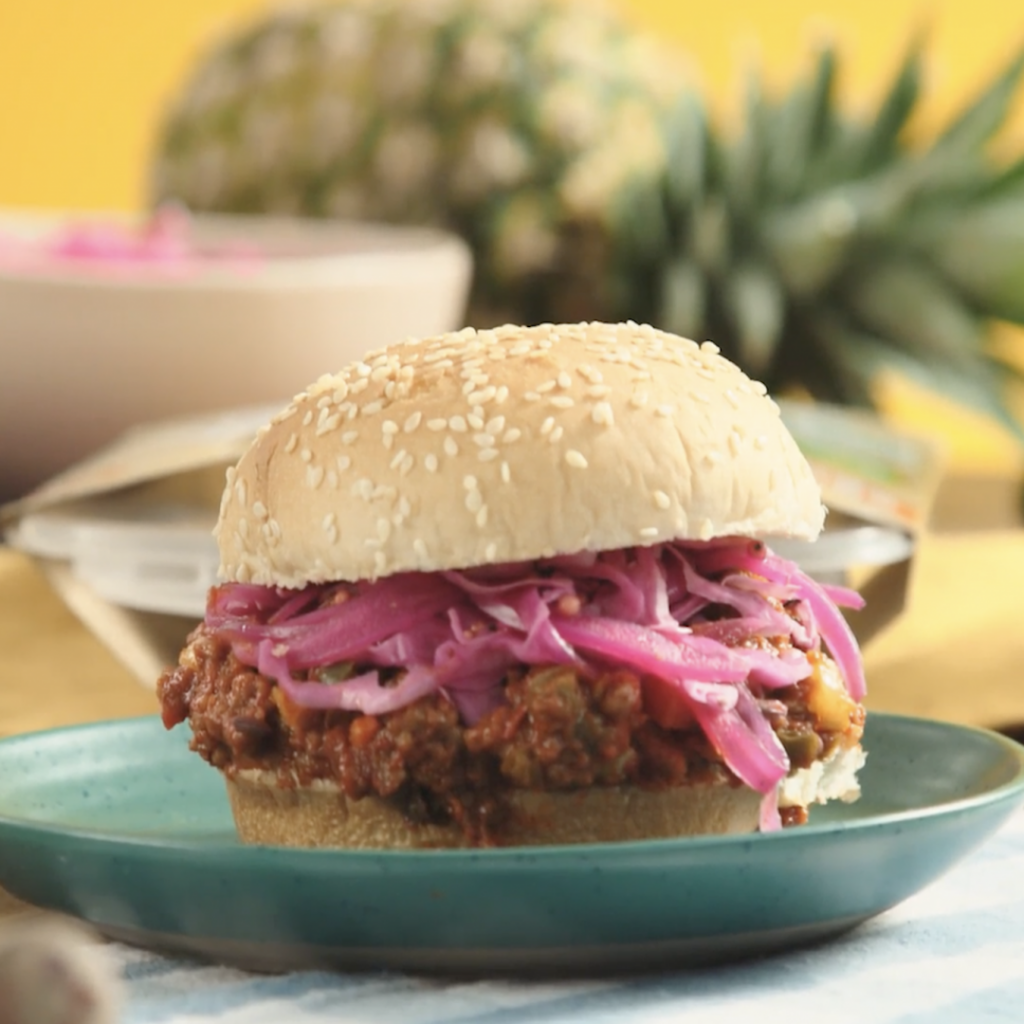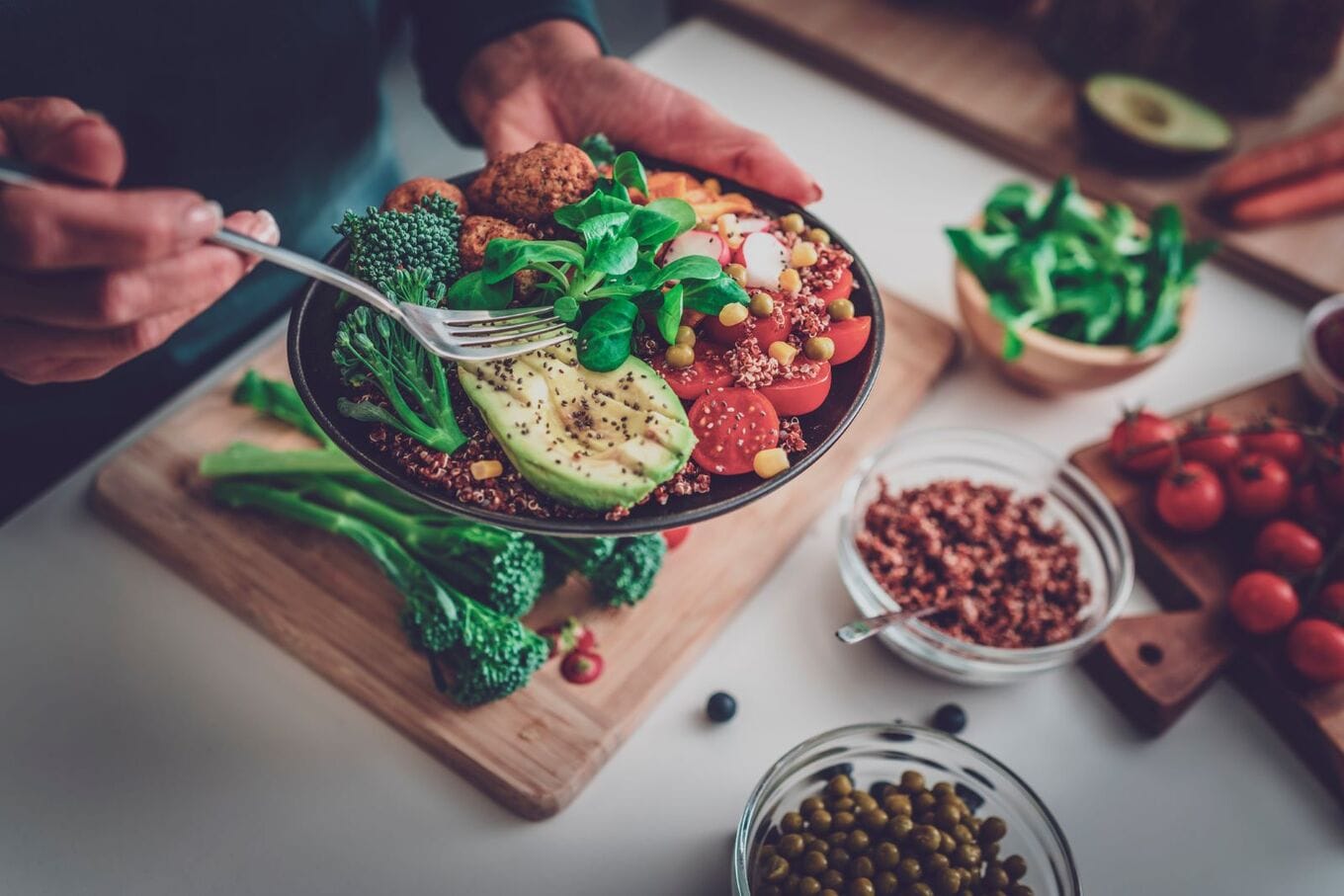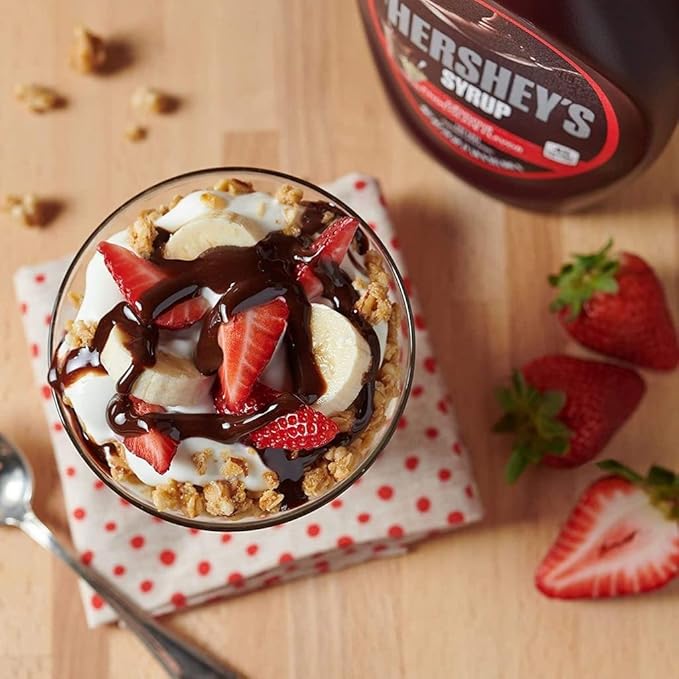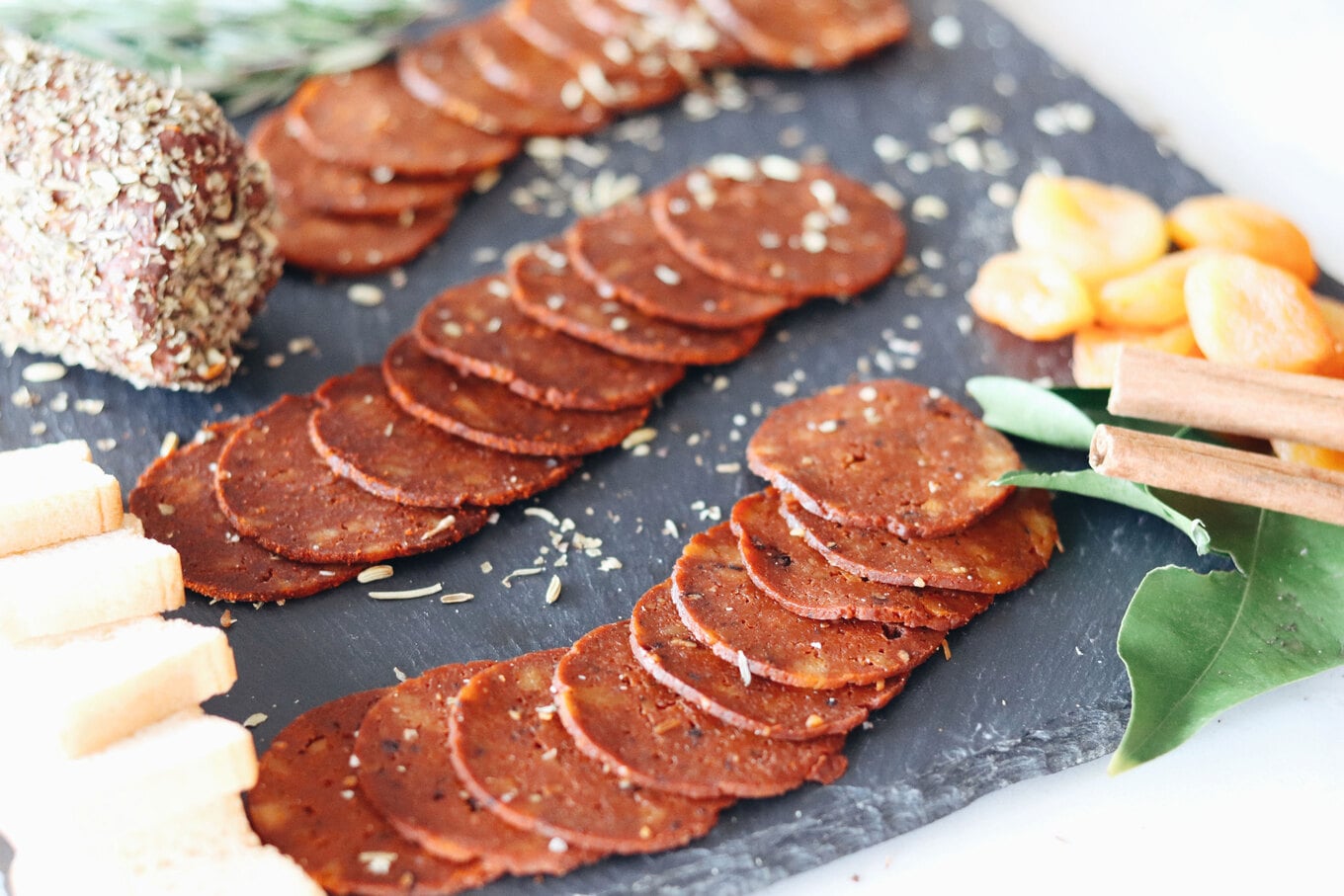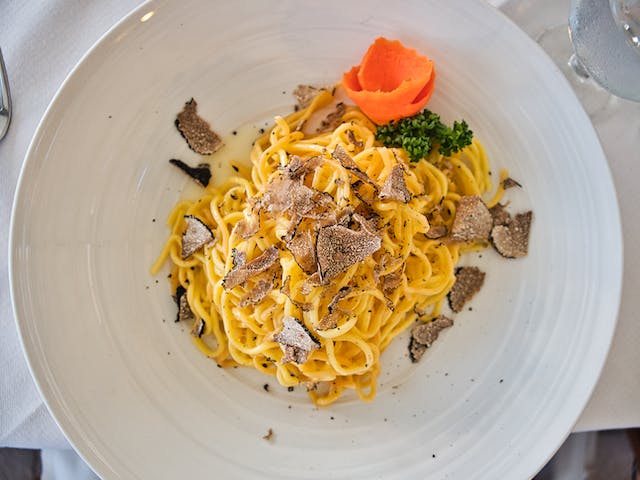Not so long ago, anyone looking to satisfy their meat craving with a plant-based substitute had to be content with alternatives made from such ingredients as soy, lentils, or beans. The results often ran the gamut from bland to bearable, and meat-lovers trying to reduce their consumption without sacrificing flavor were generally disappointed. That began to change in 2012, when Beyond Meat, a California-based producer of vegan meat, launched its Chicken-Free Strips, replicating the taste and texture of their animal-based counterpart. This was soon followed by the company’s signature product: a burger that “bleeds,” which won kudos from meat-eaters and set Beyond Meat on a path to becoming a market leader in the plant-based protein space.
After being initially funded by venture capitalists, Beyond Meat went public in 2019 with a hugely successful IPO, becoming the first vegan meat alternative to trade on the US stock exchange. This helped the company offer a broad range of plant-based products, including sausages, ground “beef,” chicken tenders, crumbles, meatballs, and its ever-popular burger patties. These can be found in more than 122,000 retail outlets in 80 countries.
Beyond Meat
Getting into so many locations wasn’t easy, but Beyond Meat has two things going for it: a unique product and favorable word of mouth. These made it easier when company founder Ethan Brown refused to work with stores unless they agreed to display the brand’s products in the meat aisle, a move he regarded as crucial. “The future is one where the meat case is going to be called the protein case and consumers will be able to buy plant-based and animal-based protein side by side,” he told The Washington Post in 2016.
Table of Contents
What is Beyond Meat made from?
Beyond Meat products taste so much like animal-based products that it’s hard to believe they are composed entirely of plant ingredients. Each product is different, though the main components are water, pea protein, various oils, and seasonings. In addition, the burgers contain rice protein, yeast protein, cocoa butter, methylcellulose, potato starch, apple extract, sunflower lecithin, and red beet juice, the latter of which makes them appear to bleed.
In explaining Beyond Meat ingredients to investors in 2019, Brown said, “When we think about meat, we define it in terms of its composition. And as it turns out, meat is, at a high level, an assembly of amino acids, lipids, trace minerals and vitamins, and water. We’ve developed a scientific and technological understanding as well as infrastructure over the past decades to assemble these core parts into the architecture of meat, drawing directly from plant-based sources.”
 Beyond Meat
Beyond Meat
What makes Beyond Meat products so much like animal flesh is the process of putting the ingredients through an extruder machine, a giant pressure cooker that gives the plant protein a fibrous texture similar to muscle tissue. It also helps that the company infuses its products with coconut oil, which gives a mouthfeel very much like animal fat.
Beyond Meat uses no genetically modified ingredients.
Is Beyond Meat healthy?
While far from being a “health food,” Beyond Meat products are good sources of protein, vitamins, and minerals. The Beyond Burger now contains B-12, for instance, an essential nutrient found in animal-based meats (and very few vegan foods). It also has 35-percent less total saturated fat than 80/20 ground beef, fewer calories, and no cholesterol—all while offering the same 20 grams of protein found in a traditional hamburger.
The biggest health concern with Beyond Meat is that it’s a processed food. But nutritionists have determined that Beyond Meat is a fairly healthy choice, provided it’s eaten in moderation. A study published in The American Journal of Clinical Nutrition, meanwhile, even found that Beyond Meat products lower some cardiovascular risk factors compared with red meat.
Another concern is the laundry list of ingredients that Beyond Meat products contain. Methylcellulose, which Beyond Meat classifies as a plant-derived carbohydrate, is especially curious, as it apparently does not occur naturally and is synthetically produced. (It is found in many other foods, such as ice cream, bread, and cake.) The increasingly crowded realm of animal-friendly proteins is constantly evolving, and Beyond Meat’s R&D team—which consists of experts with backgrounds in biomedical and cancer research, food science, and chemistry—continues to refine its products to make them healthier as well as tastier.
Is Beyond Meat better for the planet?
The Beyond Meat website touts a 2018 life-cycle analysis showing that producing its Beyond Burgers generates 90-percent fewer greenhouse gas (GHG) emissions than regular beef. A peer-reviewed study, commissioned by Beyond Meat and conducted by the University of Michigan, compared the environmental impact of the Beyond Burger to a quarter-pound US beef burger and found that the Beyond Burger also uses 99-percent less water, 93-percent less land, and 46-percent less energy in its production.
But some environmental groups have criticized Beyond Meat for not publicly disclosing the amount of GHG emissions from its operations, supply chains, or consumer waste, and for not disclosing the effects of its operations on forests or how much water is used, making its planet-friendly claims difficult to verify. Marco Springmann, a senior environmental researcher at the University of Oxford, agrees that switching to a plant-based diet is better for the planet, and companies like Beyond Meat are tapping into an important food movement. “However, while their processed products have about half the carbon footprint that chicken does, they also have five times more of a footprint than a bean patty.”
Even if Beyond Meat relies on industrial farming practices to create its products and does not disclose the full extent of its environmental effects, years of research has shown that plant-based meat has a lower carbon footprint than most animal products. With animal agriculture contributing 14.5 percent of the world’s GHG emissions—and the global demand for meat increasing—it’s clear that moving away from consuming animals is much kinder and more sustainable.
Beyond Meat products
The company currently offers 11 animal-friendly products that mimic the taste and texture of meat:
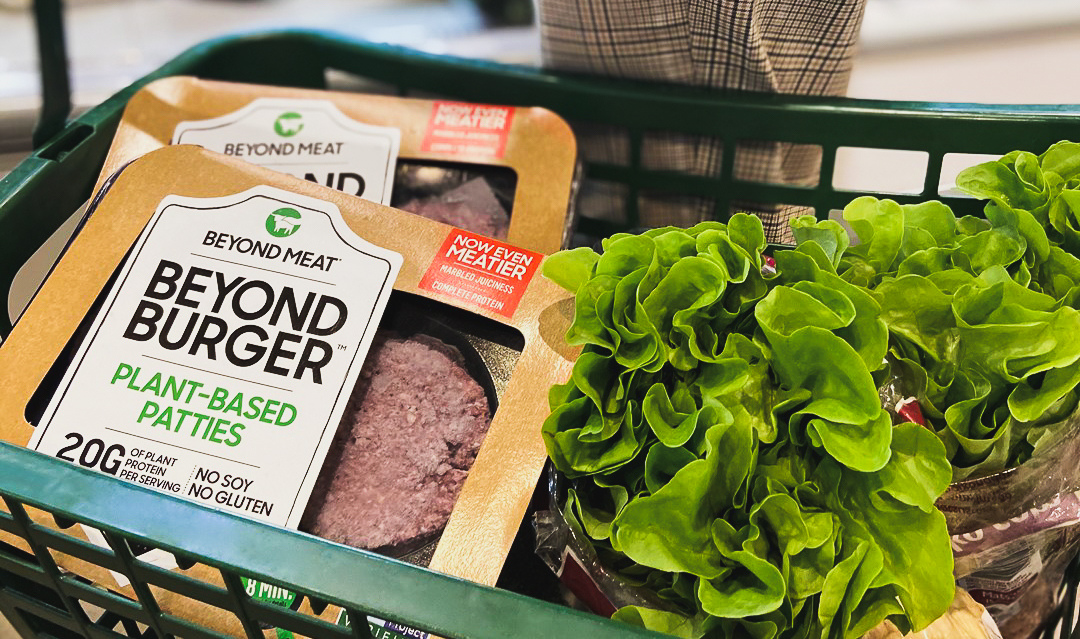 Beyond Meat
Beyond Meat
Beyond Burger smells, sizzles, and satisfies like a beef patty, providing the experience of enjoying a burger without the cruelty.
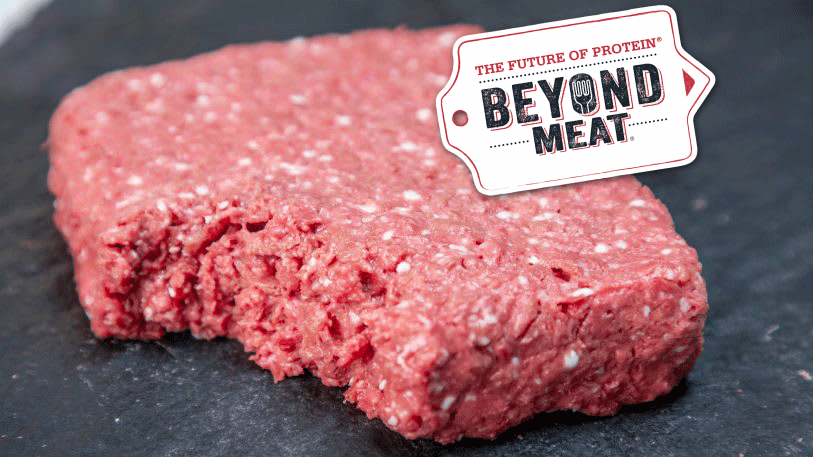 Beyond Meat
Beyond Meat
Beyond Beef can be used in sliders, meat sauces, chili, enchiladas, and casseroles—any recipe that calls for ground beef.
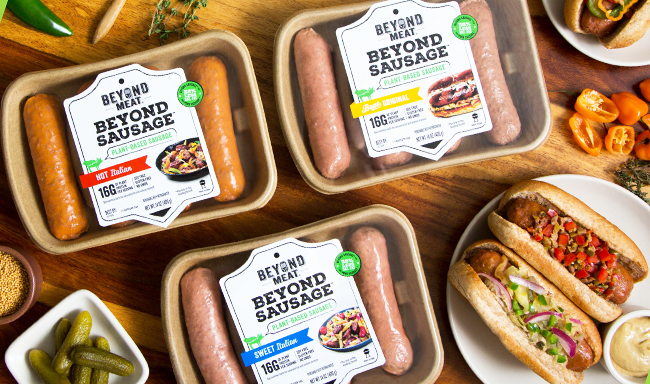 Beyond Meat
Beyond Meat
Beyond Sausage is available in three flavors: Original, Hot Italian, or Sweet Italian Brats. They can be cooked on a skillet, griddle, or grill and are also perfect on pizzas or pasta.
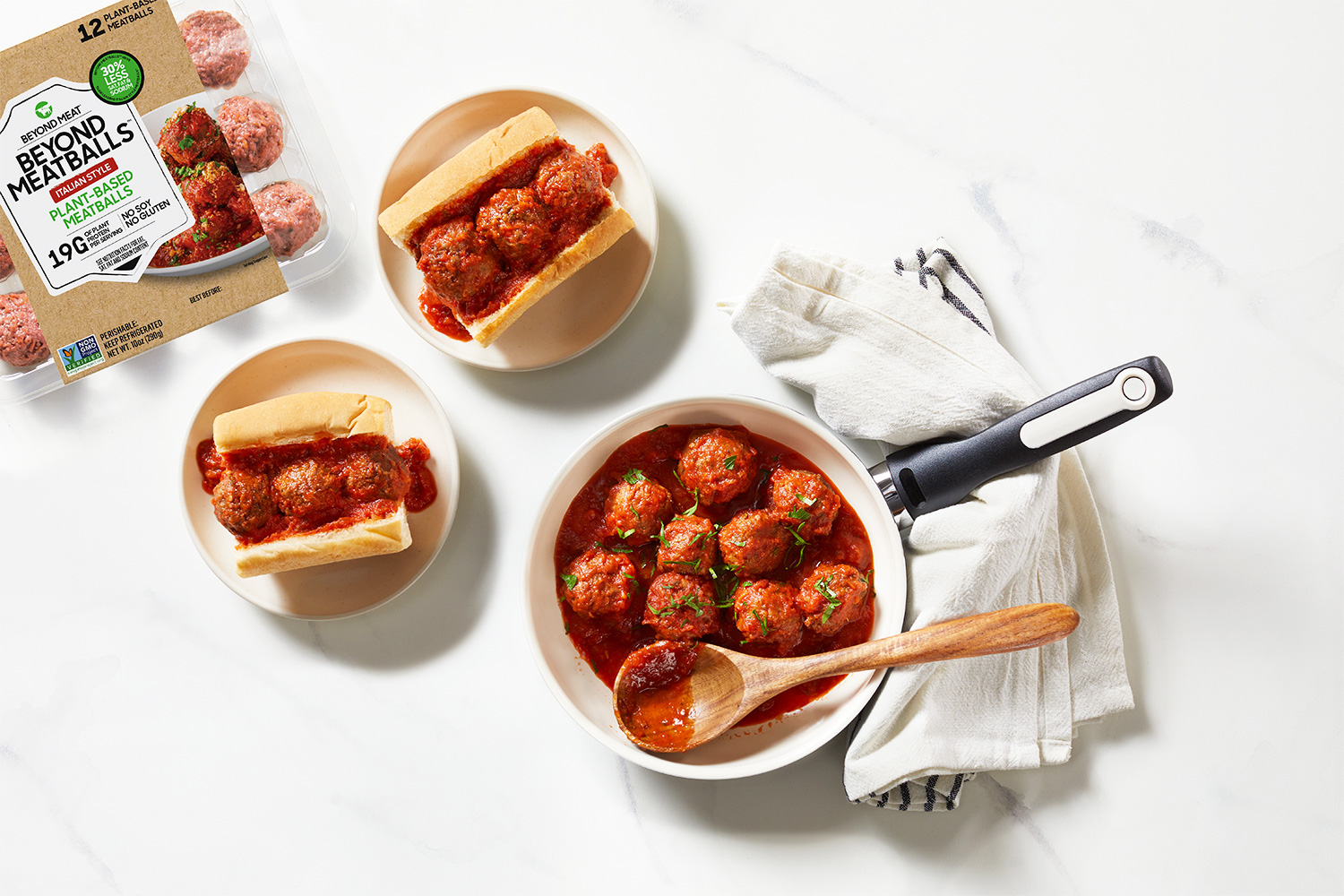 Beyond Meat
Beyond Meat
Beyond Meatballs are authentic-tasting and versatile, great whether they’re smothered in spaghetti sauce, fried for a sub, baked as an hors d’oeuvre, or simmered in a soup.
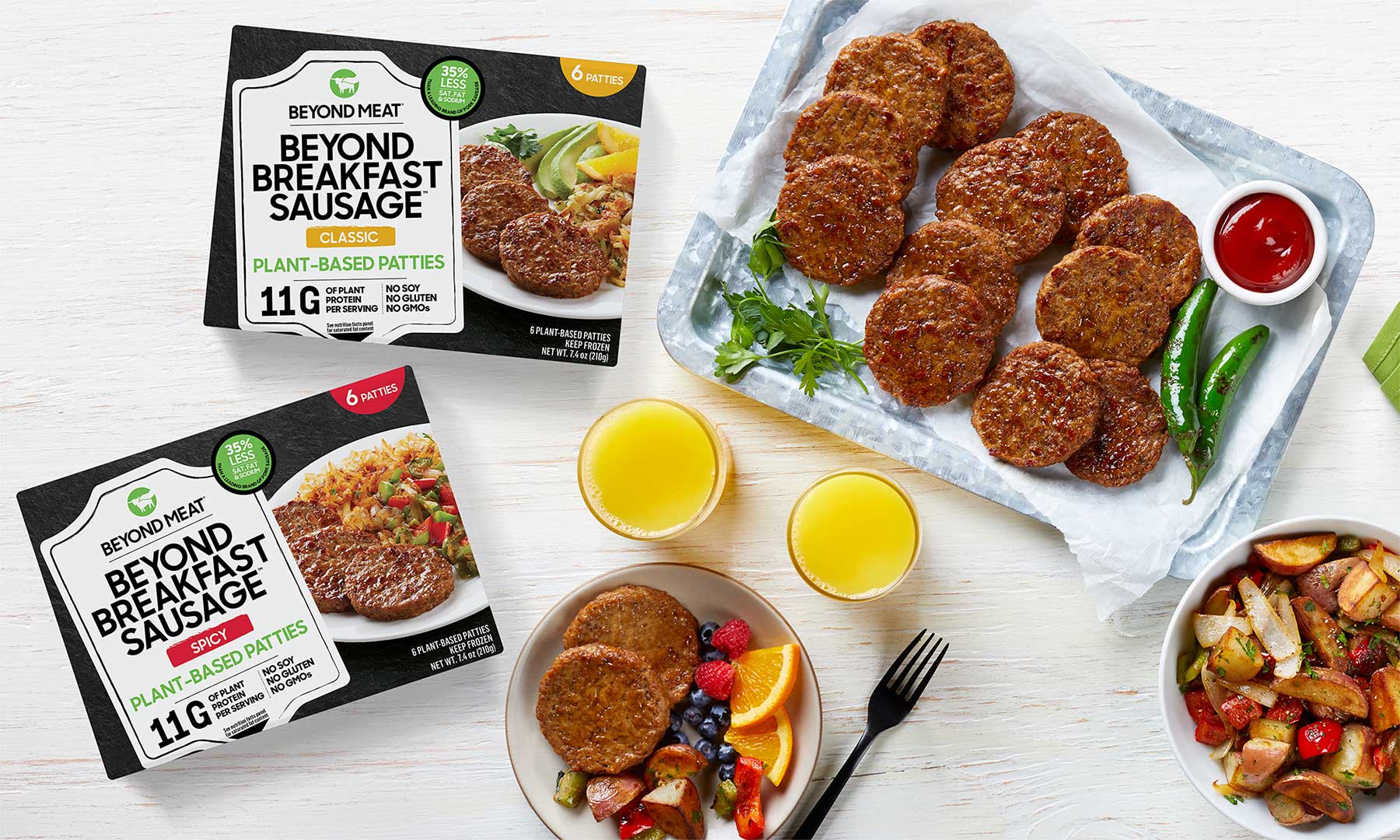 Beyond Meat
Beyond Meat
Beyond Breakfast Sausage is an easy-to-prepare patty that can be paired with pancakes, fried for frittata, or tucked into an English muffin for a delicious morning sandwich.
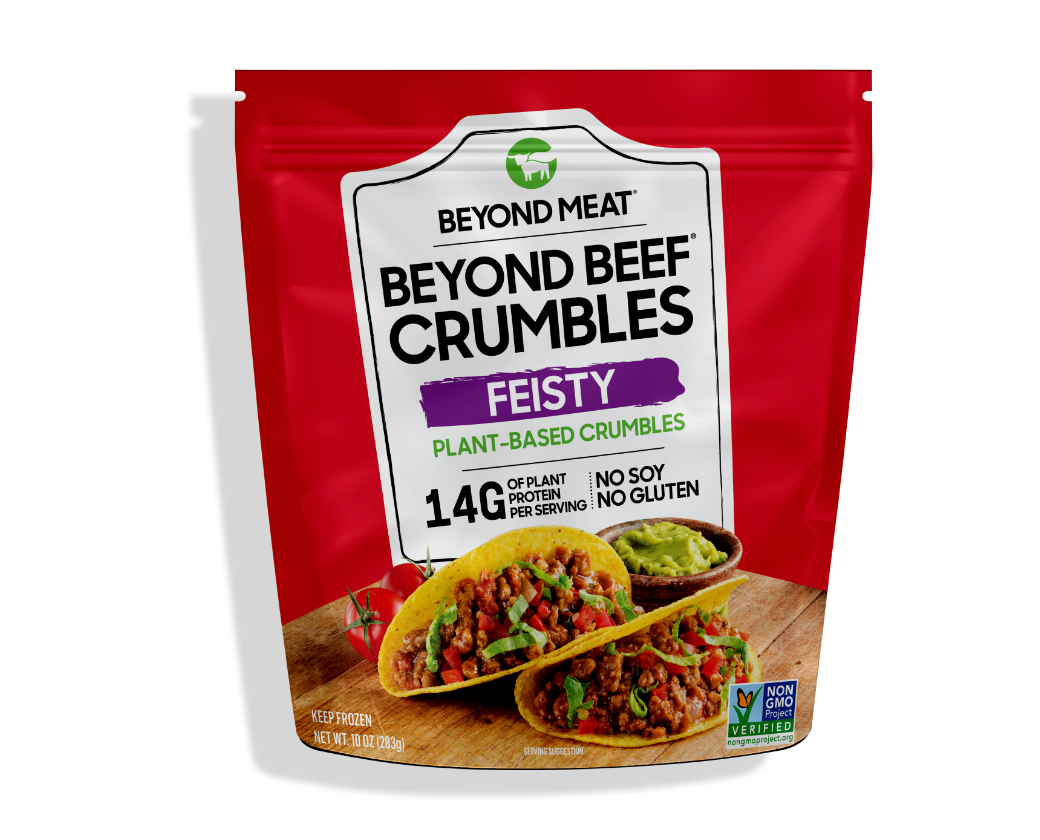 Beyond Meat
Beyond Meat
Beyond Beef Crumbles are a convenient ingredient for nachos, spaghetti sauce, tacos, sloppy joes, and more.
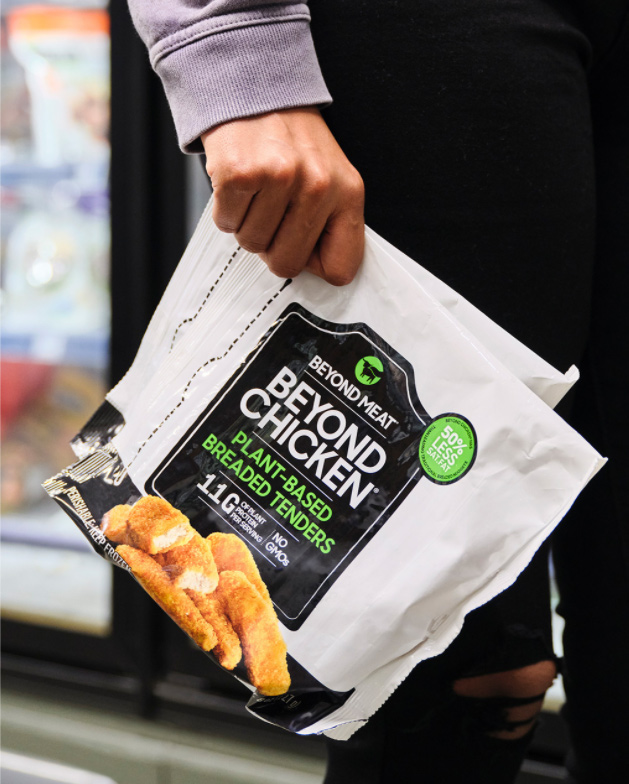 Beyond Meat
Beyond Meat
Beyond Chicken Tenders can be baked and used in wraps, sandwiches, salads, tacos, or any recipe that calls for breaded chicken.
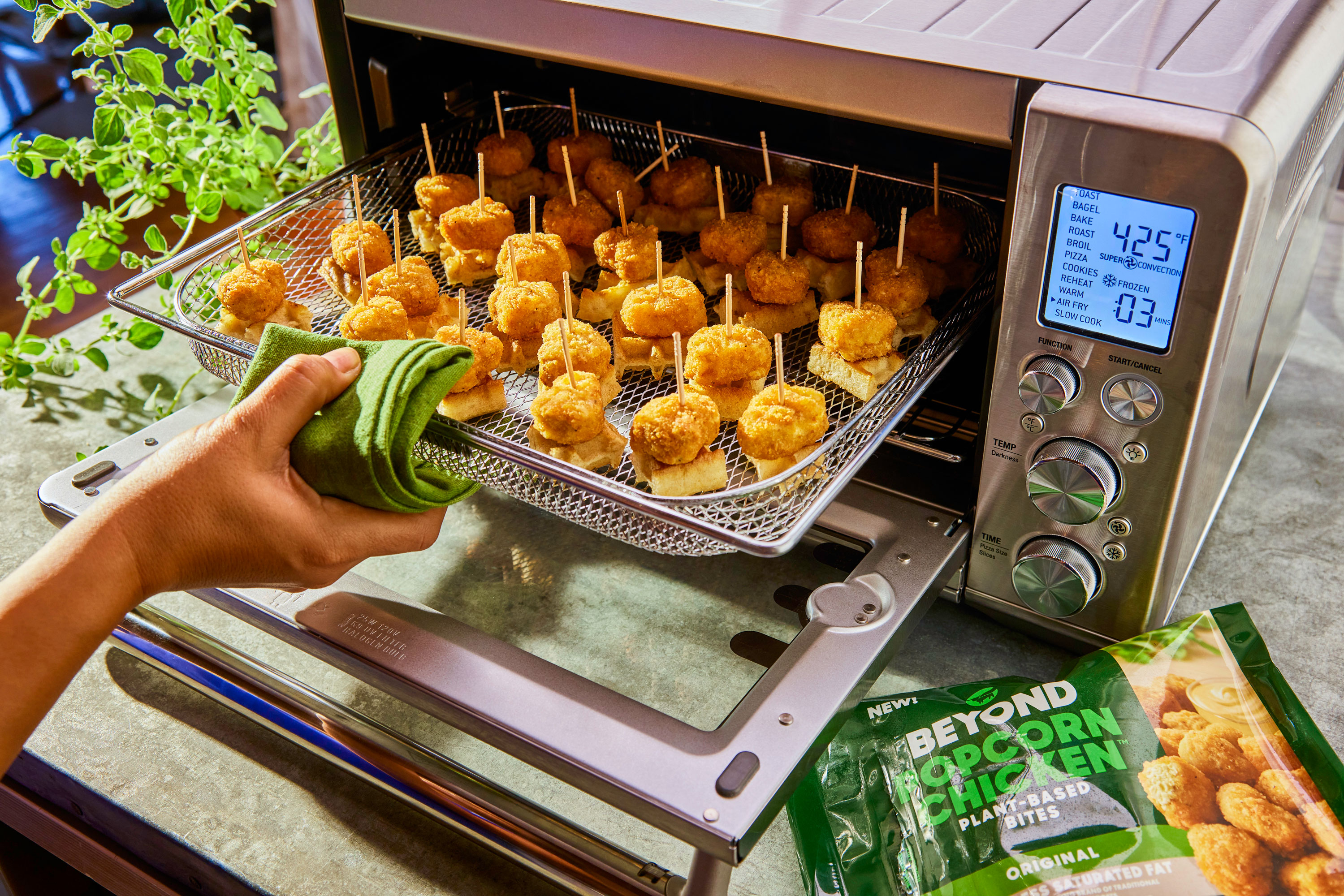 Beyond Meat
Beyond Meat
Beyond Popcorn Chicken is party-ready. When paired with an array of dips and sauces, these bite-sized eats are a perfect appetizer for any get together.
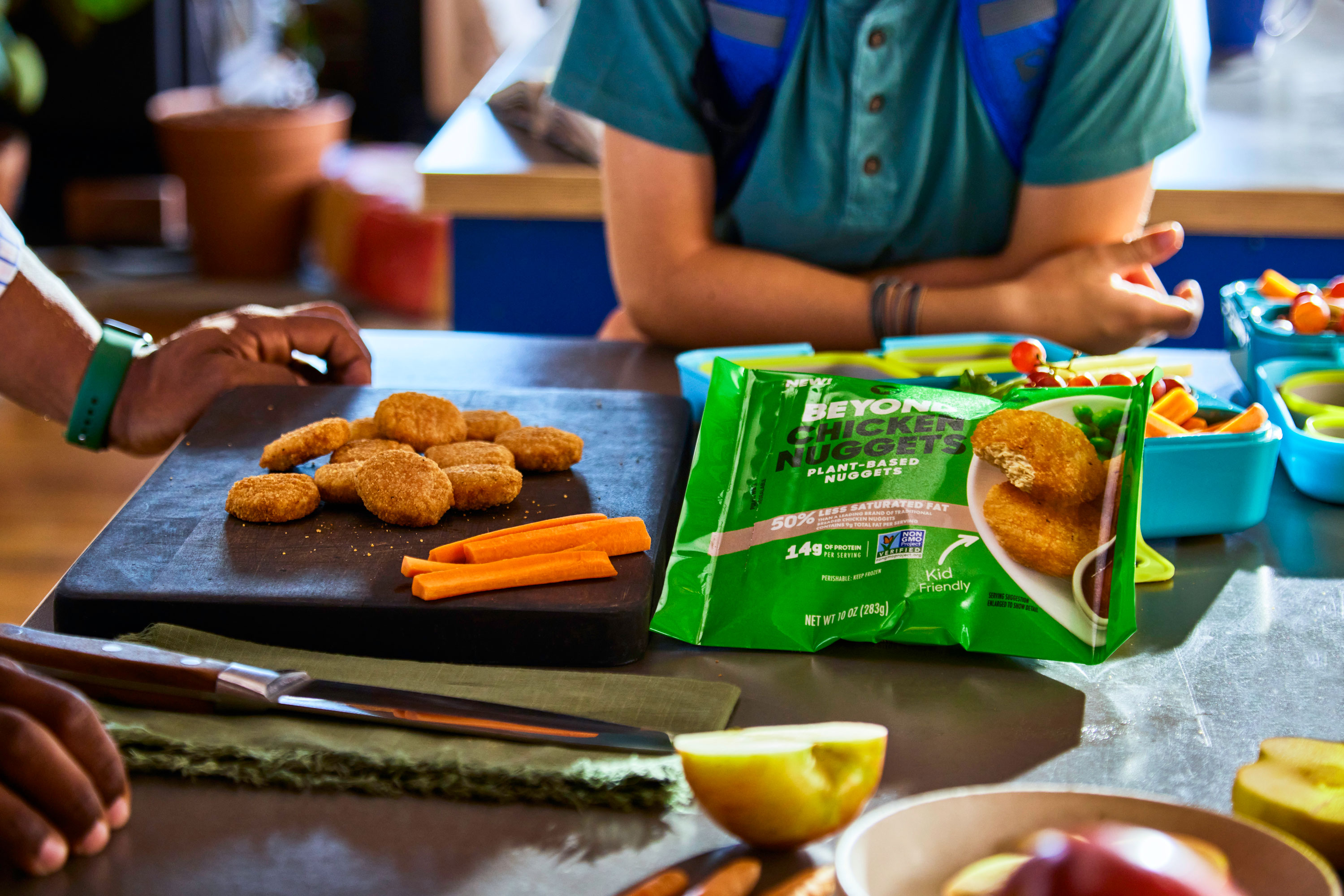 Beyond Meat
Beyond Meat
Beyond Chicken Nuggets round out this vegan brand’s chicken offerings. Even the toughest kid critics will approve.
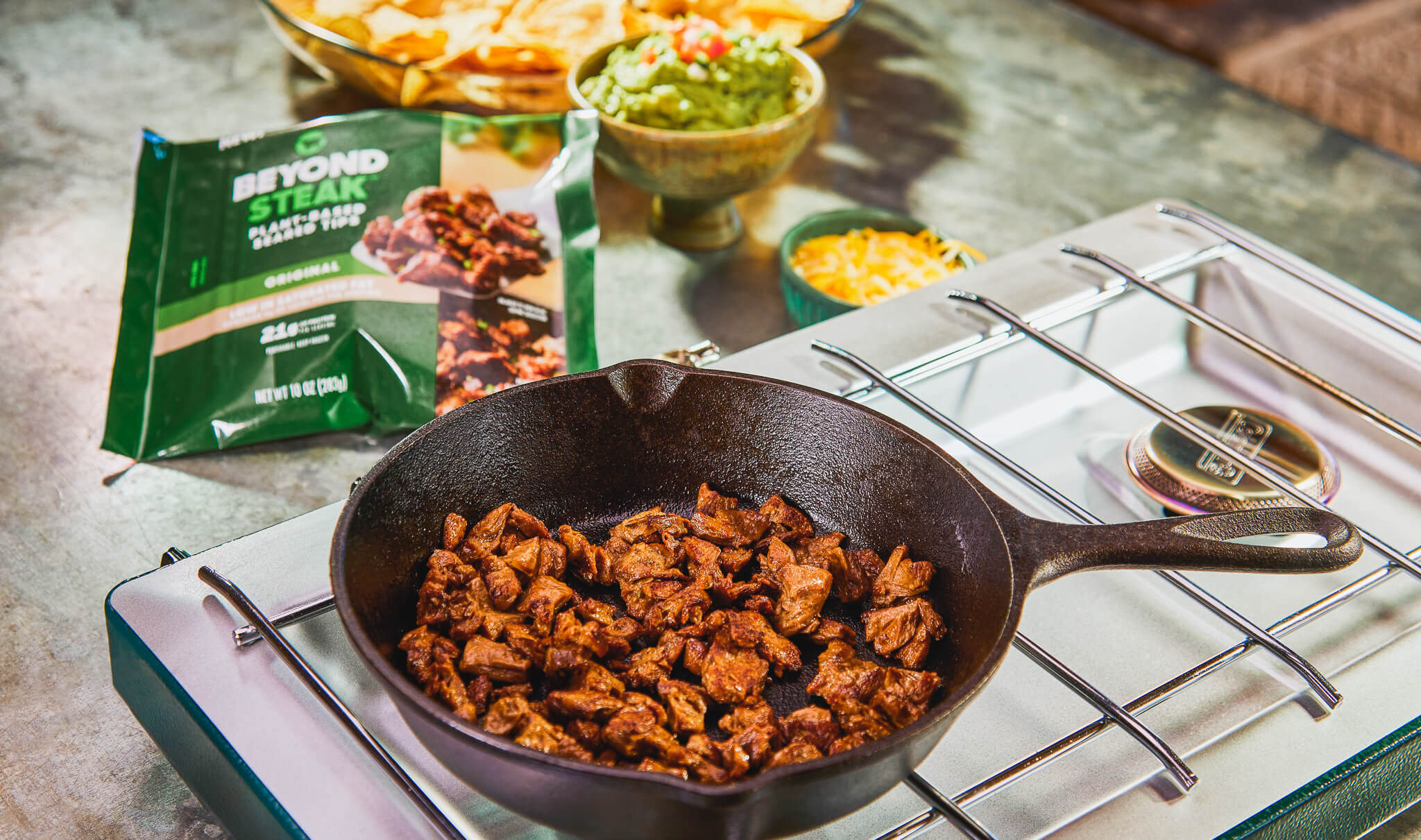 Beyond Meat
Beyond Meat
Beyond Steak is perfect for loading into tacos, atop nachos, burritos bowls, salads, and more. The plant-based seared tips are smoky, tender, and pack a punch of flavor.
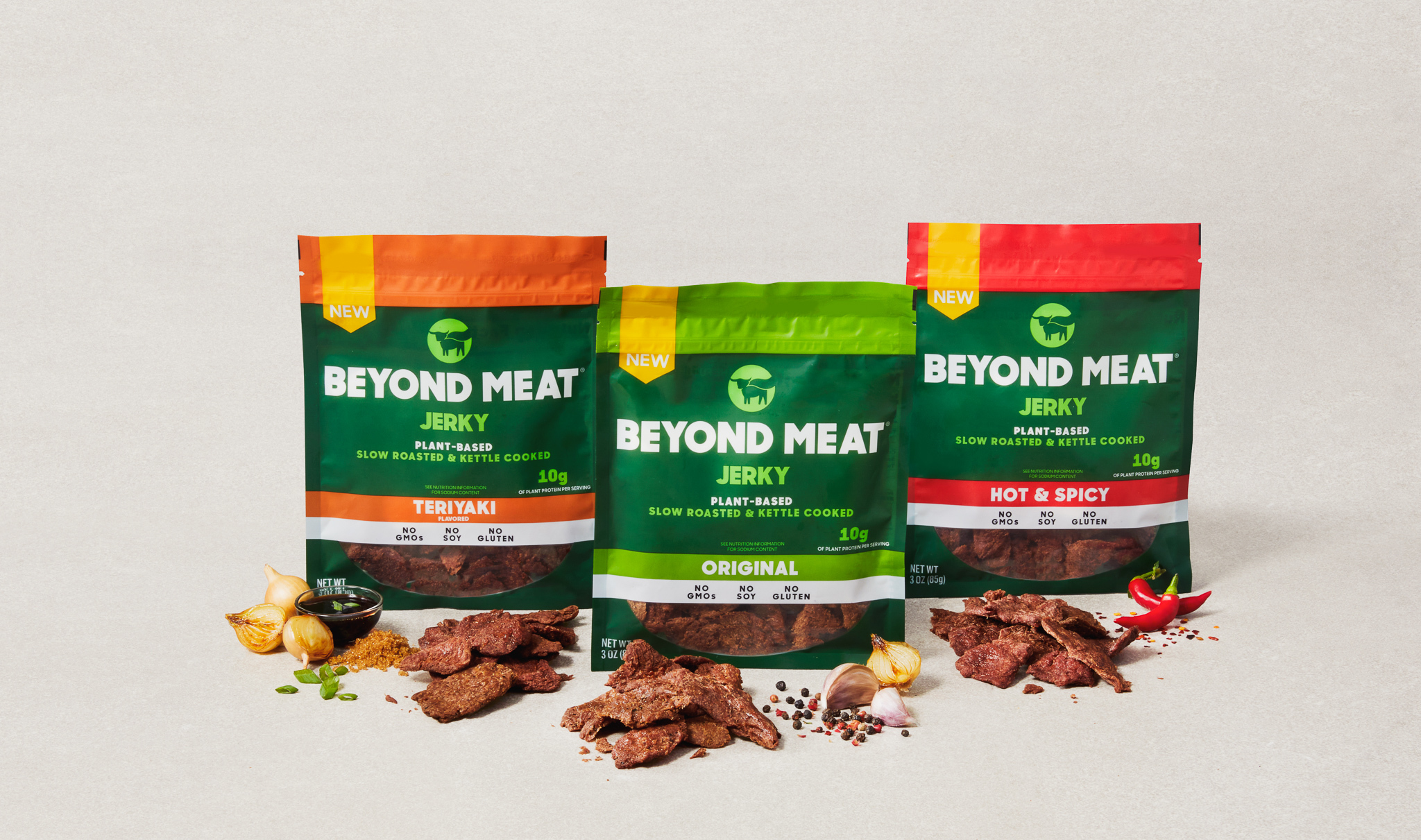 Beyond Meat
Beyond Meat
Beyond Jerky leads this brand’s snack offerings. Available in Teriyaki, Original, and Hot & Spicy Flavors, these slow-roasted and kettle-cooked snacks pack a whopping 10 grams of protein per serving.
How to use Beyond Meat
Beyond Meat products come with cooking instructions and are prepared just like animal-based meat. They are sold ready to cook—no further prep is required. The Beyond Meat Crumbles are pre-cooked and ready to be warmed for use in meals. Check the sell-by date, as the products should be used right away. If purchased frozen, be sure to thaw the Beyond Meat product before cooking. Beyond Jerky is ready to eat upon purchase.
Where to find Beyond Meat
Beyond Meat’s flagship product, the Beyond Burger, can be found at more than 30,000 grocery stores, schools, and such restaurant chains as A&W, Carl’s Jr., and Denny’s. (The company developed another version of its patty for McDonald’s.) Meanwhile, you can also find Beyond Meat products being used at Del Taco, Kentucky Fried Chicken, Peet’s Coffee, Subway, and Veggie Grill, among many other eateries. Check out the company’s store locator here to find Beyond Meat products near you.
Beyond Meat recipes
Below are five vegan Beyond Meat recipes sure to satisfy meat-lovers.
1 One Pot Beyond Beef Chili
This simple recipe is packed with flavorful veggies, beans, and plant-based protein prepared in a slow cooker.
Get the recipe
2 Beyond Meat Classic Vegan Meatloaf
Meatloaf is an old-school comfort food that has been reimagined many times using various plant-based ingredients, such as lentils, chickpeas, and beans—none of which replicate the texture and taste of this traditional dish the way Beyond Meat and this recipe does.
Get the recipe
3 Beyond Beef Shepherd’s Pie
Originally an Irish delicacy, this hearty casserole is known for its ground meat cooked in gravy, carrots, celery, and onions and topped with a mashed potato crust. This vegan version is a crowd-pleaser that serves six.
Get the recipe
4 Tuscan-Style Beyond Sausage Pasta
Tuscan cuisine is centered on the Italian concept of cucina povera or “poor cooking,” calling for simple and easy-to-find ingredients. This recipe uses linguine, sliced Beyond Sausage brats, tomatoes, cannellini beans, baby spinach, and seasonings to create a mouthwatering meal.
Get the recipe
5 Beyond Beef Midwest Sloppy Joe
Sloppy joes—a variation on the hamburger—can be made in countless ways, but few are as hearty and heart-healthy as this version.
Get the recipe

